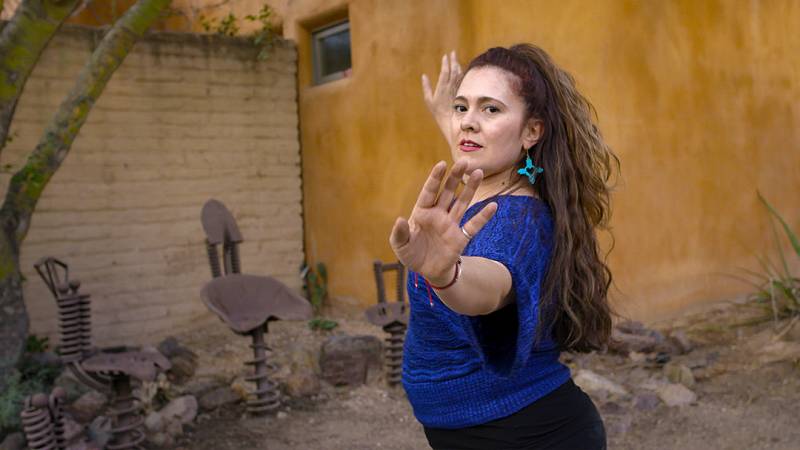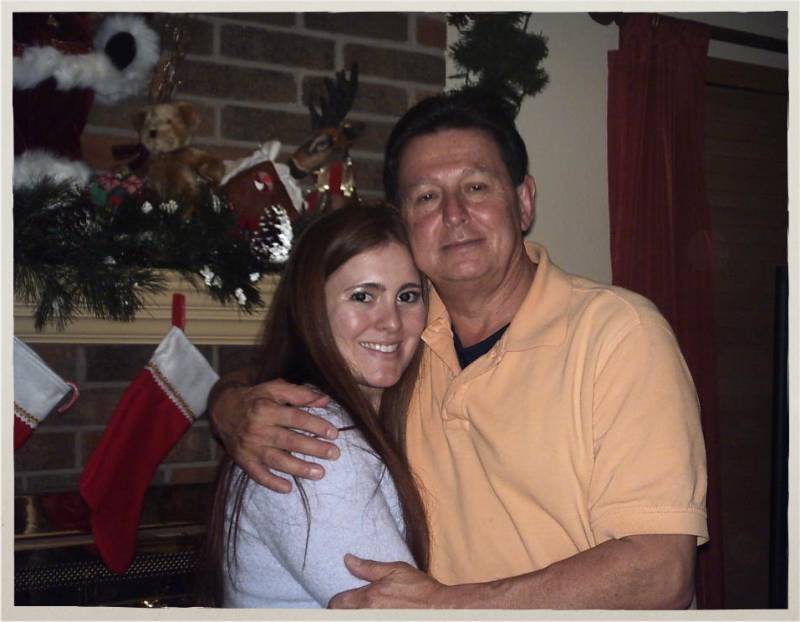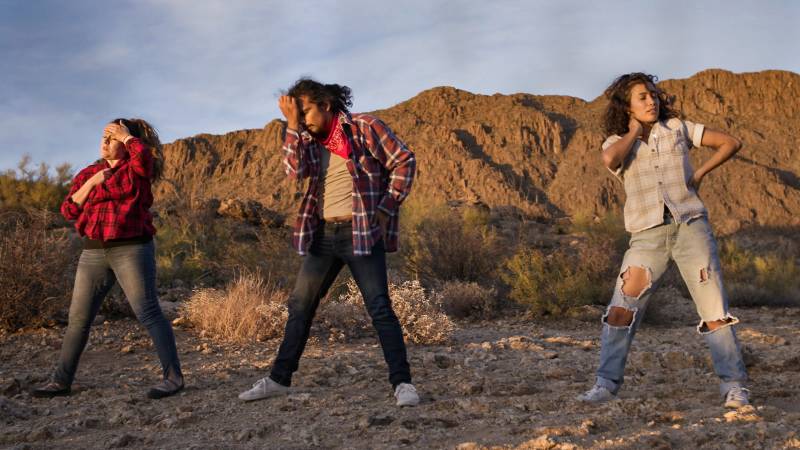If Cities Could Dance is KQED Arts and Culture’s award-winning video series featuring dancers across the country who represent their city’s signature moves. Subscribe to our YouTube Channel to never miss a new episode.
For Yvonne Montoya, the U.S.-Mexico borderlands are an infinite source of inspiration. “The expanse of landscapes, the colors, the sky,” says Montoya, the founder of Safos Dance Theatre in Tucson, Arizona. “This is indigenous land. It was also Spain and Mexico and a part of Latin America for longer than it has been part of the United States.”
Montoya, a native New Mexican, is the descendant of Mexicans “who the border crossed in 1848,” she says, referring to the Mexican-American war and the ceding of Mexican territory to the U.S. government. “My roots in the Southwest run really deep,” she says. “I am a non-immigrant Chicana Latina. And like in New Mexico, there are Tucsonsenses that have been here since before Tucson was part of the United States.”
As a dancer and choreographer, Montoya was shaped by her hometown of Albuquerque, New Mexico, and her adopted home of Tucson, where she has lived for the last several years. Tucson—Arizona’s second largest city—sits just an hour’s drive north of the U.S.-Mexico border and has strong cultural ties with Mexico, where Montoya often participates in cross-border dance collaborations.

In her work, Montoya mixes contemporary dance with oral histories from the Southwest borderlands, often placing her choreography in site-specific and non-traditional spaces—such as alongside the U.S.-Mexico border wall or in the Sonoran Desert. “The entire reason Safos was founded was to nurture a local community of dance artists who are Latinx, Mexican American, Chicanx, Mexican immigrants, and other immigrants, so that we could support ourselves in finding that multiplicity of voices, experiences and how our bodies move.”



